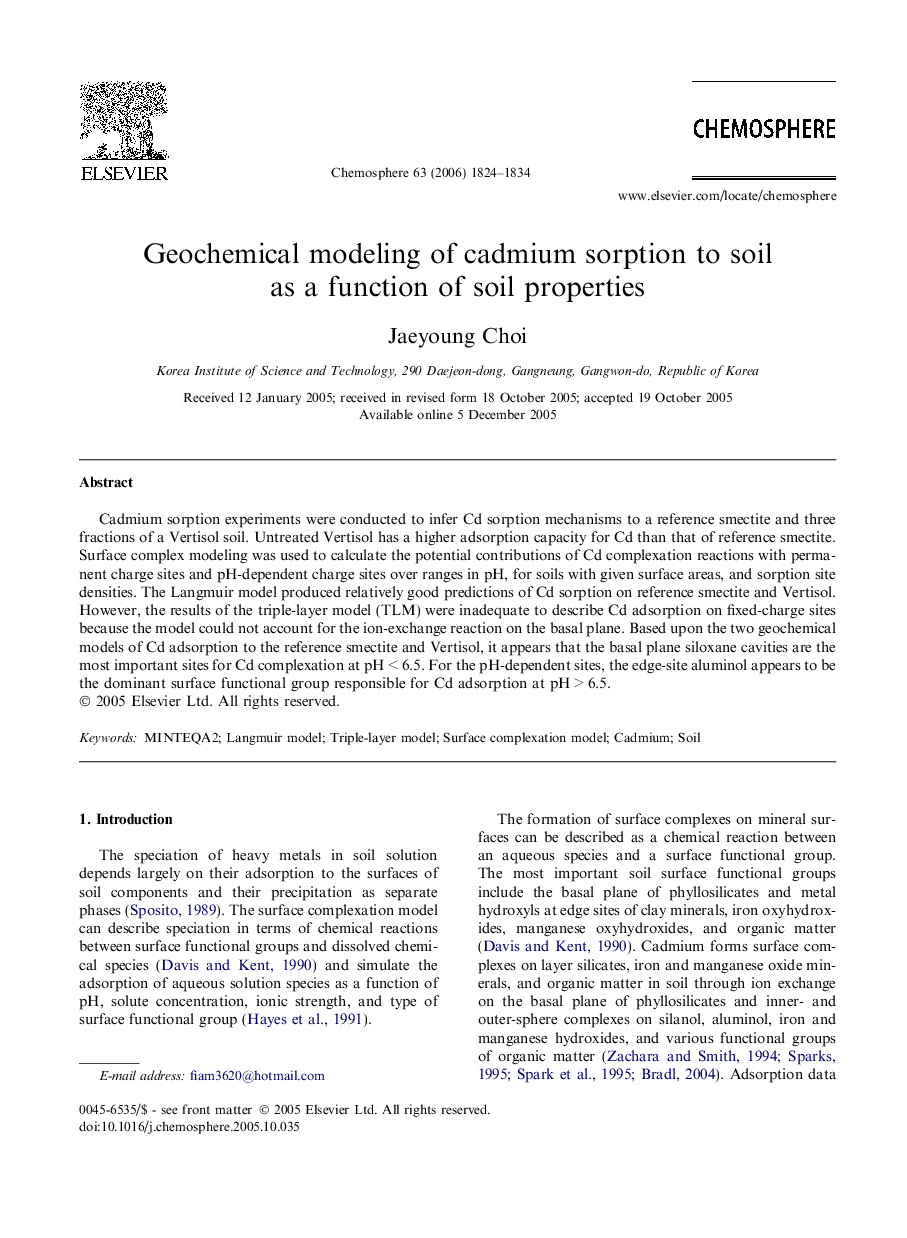| Article ID | Journal | Published Year | Pages | File Type |
|---|---|---|---|---|
| 4416738 | Chemosphere | 2006 | 11 Pages |
Cadmium sorption experiments were conducted to infer Cd sorption mechanisms to a reference smectite and three fractions of a Vertisol soil. Untreated Vertisol has a higher adsorption capacity for Cd than that of reference smectite. Surface complex modeling was used to calculate the potential contributions of Cd complexation reactions with permanent charge sites and pH-dependent charge sites over ranges in pH, for soils with given surface areas, and sorption site densities. The Langmuir model produced relatively good predictions of Cd sorption on reference smectite and Vertisol. However, the results of the triple-layer model (TLM) were inadequate to describe Cd adsorption on fixed-charge sites because the model could not account for the ion-exchange reaction on the basal plane. Based upon the two geochemical models of Cd adsorption to the reference smectite and Vertisol, it appears that the basal plane siloxane cavities are the most important sites for Cd complexation at pH < 6.5. For the pH-dependent sites, the edge-site aluminol appears to be the dominant surface functional group responsible for Cd adsorption at pH > 6.5.
